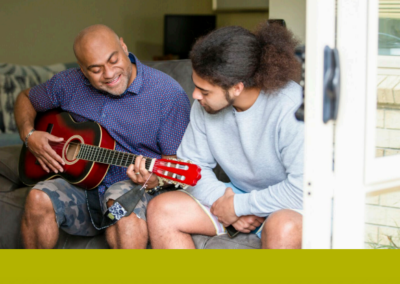Case Study_Monte Cecilia_FINAL

Step 1: Create a vision for the city. Freeman’s vision is: “Housing at the heart of connecting and strengthening communities.”
She has six key targets. One: address the shortage of housing by building 125,000 new homes by 2025 and 420,000 by 2045. That’s the same goal as in the council’s Unitary Plan. Freeman wants 50 per cent of them to be “affordable homes”.
Step 2: Raise home ownership levels to 65 per cent by 2025, including among Māori and Pacific Islanders. Three: improve the quality of existing homes so that 95 per cent of them are “classified as warm, safe and dry”. Four: create 3000 more social housing dwellings by 2018, ensuring that by 2025, 20 per cent of social housing is provided by the community housing sector and also that the needs of the elderly are fully met.
Enough big goals already? Leonie Freeman hasn’t finished. Five: eliminate homelessness in the city by 2022. Hamilton, she points out, has largely achieved this over the last two years. And six: strengthen communities with better tenure options for tenants. Also this: she wants 80 per cent of residents in every part of the city to rank their community as “highly desirable”.
No pressure, then. Step 2, right now, is the critical one. It’s about structure. Freeman calls her approach “Collective Impact”. It means getting everyone in a room and not letting them out until…
If only. It means, as she puts it, to have “all the groups – government, non-profit, philanthropic and private sector” – work together as partners. Agreeing the goals, coordinating to achieve them. She points to similar projects in Canada, Chicago and other parts of the US. The way to make Collective Impact happen, she says, is for the groups to set up a new non-for-profit organisation to sit in the middle of it all. She wants to call it Housing Connect.
Step 3: Create a Housing Framework, a way of seeing the issue that allows the initiatives of the disparate groups to be coordinated. She’s got a wheel diagram, moving from demand in the centre out to influencers like regulations and market forces, then out to delivery mechanism and finally to communication. Always important to sell the story.
Step 4: the action plan. She hasn’t got that plan yet, because that’s not how the process works. Housing Connect and its constituent groups have to create it and own it, not her.
Meanwhile, she is not alone. The 18 For 4 Campaign was launched in Auckland this month by a group of 16 housing providers under the umbrella of the Auckland Community Housing Providers’ Network (ACHPN). Mayor Phil Goff was there and he made a speech: he said he doesn’t want to be mayor of a city that puts up with 20 per cent of its citizens paying 60 per cent of their household income on rent. Developers like Mark Todd from Ockham were there, along with ACHPN members like the Monte Cecilia Housing Trust, VisionWest Community Trust and Whai Maia, the iwi development arm of Ngāti Whātua Ōrākei.
Eighteen for 4: the name declares the strategy. Four houses on large sections can become 18 homes. And of those 18 homes, the formula is that eight will be social housing units for rent, four will be affordable homes for purchase and six will be homes for “assisted ownership”, which means rent to buy.
Read the whole Spinoff article here.
CHA Newsletter - 17 December 2025
CHA Newsletter - 2 December 2025
Community Housing Aotearoa Newsletter - 3 November 2025